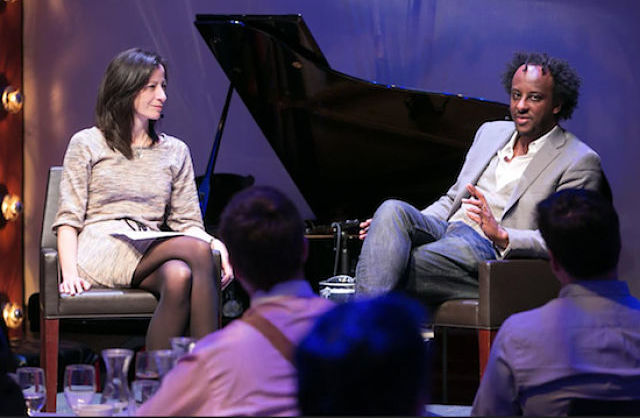 Inside my family’s home, I could lay full claim to being an Ethiopian; on the streets of Addis Ababa, however, I had to contend with the obvious facts. - Dinaw Mengestu (Photo: The Brooklyn Daily Eagle)
Inside my family’s home, I could lay full claim to being an Ethiopian; on the streets of Addis Ababa, however, I had to contend with the obvious facts. - Dinaw Mengestu (Photo: The Brooklyn Daily Eagle)
On my first day in Ethiopia, my aunt Aster asked me not to leave the house. “Stay home,” she said. “Don’t go outside alone.” Her father, my grandfather, had built the house forty years earlier, shortly after his eighth and final child was born. I had lived there for the first two years of my life, before my mother, my sister, and I left to join my father, who had migrated to America in 1978, in the wake of Ethiopia’s Communist revolution. It had been twenty-five years since I or anyone in my immediate family had been back to Ethiopia. My aunt, whom I met for the first time when I landed in Addis Ababa, told me that in the years since we had left practically nothing had changed in the bedroom that my mother, my sister, and I had shared. “Everything is the same,” she told me. “Even your mother’s shoes are still there.”
My aunt lived in the house with her teen-age daughter. She assured me that it had everything I needed to fill my day until she came home from work: satellite television, an Internet connection, and American food that she had bought especially for me.
There was no explanation for my aunt’s determination that I stay home, nor did I ask her for one. Before my arrival, in the fall of 2005, contested elections had led to protests and mass arrests, which my aunt shrugged off as benign affairs that were more frightening to us in the West than to the people who lived through them. “You have to understand,” she said. “We’re fine. We go to work. We live our lives.”
I didn’t tell my aunt that I had come to Ethiopia with what looked to be a hand-drawn map of central Addis Ababa, the best one I could find on the Internet. That map was vital to an idea that I had formed as a teen-ager—that I could recover everything that had been lost in migration if I found my way back to Ethiopia and walked the streets of Addis Ababa, visited the graves of relatives I couldn’t remember, and stood in front of the palace where Emperor Haile Selassie had been arrested.
—
Join the conversation on Twitter and Facebook.

























